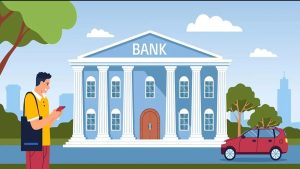Understanding Payment Fraud to Prevent It

Have you ever received an email congratulating you on becoming a billionaire? Don’t worry, you’re not alone. The purpose of such emails is to steal money and personal information, whatever you’re willing to offer. It’s believed that more people fall prey to online fraud than on the phone. In this article, we will talk about some common types of payment fraud and how to protect yourself from fraudsters.
What is Payment Fraud?
It can be defined as an illegal transaction performed by a cybercriminal with the intent to steal money, property, or private information.
The perpetrator uses the Internet to attack the victim by utilizing a variety of techniques such as fake emails, phishing, requests for wire transfers and gift cards, and many other angles.
Payment fraud can be characterized into three types:
- Stolen or lost goods
- Unauthorized or fraudulent transactions
- Bounced checks or false requests for a refund
Anyone can be a victim, from individuals to big corporations. The best way to avoid fraud is to be careful.
Types of Payment Fraud
Despite stringent laws and scrutiny, the US ranks third in the list of card fraud rates. Brazil and Mexico sit at the top. Cybercriminals are fast at finding loopholes and exploiting them to get what they want.
Here are some of the most common types of payment fraud:
#1 Phishing
Also called spoofing, phishing is a technique that involves sending fake emails purporting to be from reputable organizations to induce recipients to reveal personal information, such as credit card numbers and passwords.
About 70 percent of all cyberattacks use a combination of hacking and phishing.
An email appearing to be from your bank, asking you to login and update your account is a common example of phishing. These days, cybercriminals have started to build larger organizations to conduct such crimes.
For example, you may receive an email that appears to be from PayPal asking you to log in to change your password or send a copy of your driver’s license. Once you click on the link and upload documents, your login information and documents will be forwarded to the cybercriminal.
Many people fall victim to these crimes because such emails look real. They use the same style and very few recipients pay attention to the signs such as a fake email or number. The best way to stay safe is to never click links you do not trust and type in website URL’s directly instead of clicking on emails.
#2 Data Theft
Data theft is serious because it can result in identity theft. There is a new victim of identity theft every two seconds. It’s the most common consequence of a data breach – happening about 65 percent of the time.
There were more than 146 million exposed records in 2019. Data breaches increased about 17 percent in 2019 resulting in consumers losing over $1.9 billion to theft and identity fraud.
Data theft occurs due to a variety of reasons. Hackers can hack your computer and steal your private information. Mismanagement of data by a company that has your information is also a common cause of data theft.
The best way to be safe is to avoid sharing personal information with companies you do not trust and to always use 2FA.
#3 Chargebacks
Chargebacks are a common, yet difficult to stop form of fraud. A chargeback refers to an order from the financial organization (bank) to refund the amount paid by the buyer.
Only about four percent of dissatisfied customers get back to the merchant if there’s an issue with their order. A chargeback can be due to genuine issues such as clerical errors, wrong product, etc.
A chargeback may also be requested if a payment was made using a stolen credit card. However, it’s believed that 86 percent of all chargebacks are probable cases of fraud.
Consumers often use this trick to steal money or get goods for free. This situation is called ‘friendly fraud’.
Banks do not support the seller in such situations, which is why such cases can be very hard to fight.
Real-time chargeback prevention tools can help merchants avoid chargebacks and reduce chargeback fraud.
#4 Fake Product Fraud
This fraud is common on social media and e-commerce sites. There are a lot of fake ads on eBay and Craigslist. The average loss from such ads is $600.
Fraudsters post a real-looking ad to deceive innocent buyers who pay in advance and await the delivery that either never arrives or is not what they expected.
About 53 percent of users have fallen victim to such frauds on social media. This happens because about 91 percent of social media users cannot recognize fake ads.
To be safe, never make advance payments if you do not trust the seller. Buyers have the option to use escrow services. PayPal and other such companies also offer payment protection.
Does Payment Fraud Affect Businesses?
In most cases, businesses have to bear the brunt because banks don’t hold cardholders responsible in case of card-not-present and card-present frauds.
This is why, in most cases, e-commerce stores have to refund the money. They are often forced conduct their own investigations to identify the culprit.
Almost all kinds of businesses have to face frauds but it’s much more common among subscription-based sites. About 1.4 percent of all transactions they face are fraudulent. This happens because almost all their transactions are card-based.
Buyers and sellers both must be careful to prevent fraud. Do not do business with individuals or businesses you do not trust and make sure to keep your private information private.
Author Bio:
Lou Honick is the CEO of Host Merchant Services. Prior to founding Host Merchant Services in 2010, Lou was the founder of HostMySite.com and received numerous awards including SBA Young Entrepreneur of the Year, Inc Magazine 30 under 30, and multiple listings on the Inc 500. As a serial entrepreneur, all of his companies have operated on a singular devotion to outstanding customer service and support. Lou is a respected expert on the topics of customer service, payments and fintech, Internet technology, and entrepreneurship.






